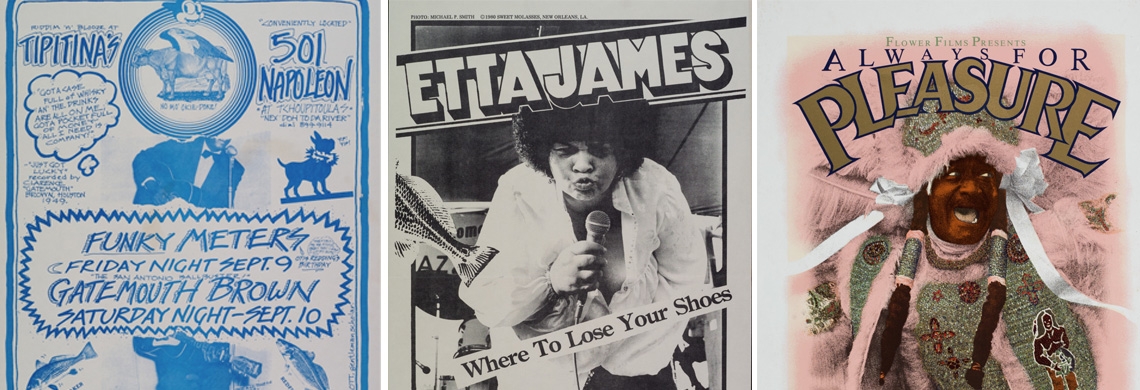The world-renowned music club Tipitina’s opened its doors in 1977 with young management and a powerhouse list of performers. The club was named after a song written by Henry Roeland Byrd, a.k.a. Professor Longhair, who appeared regularly at the venue. Photographer Michael P. Smith’s archive, acquired by THNOC in 2007, includes several posters that document the club’s early history.
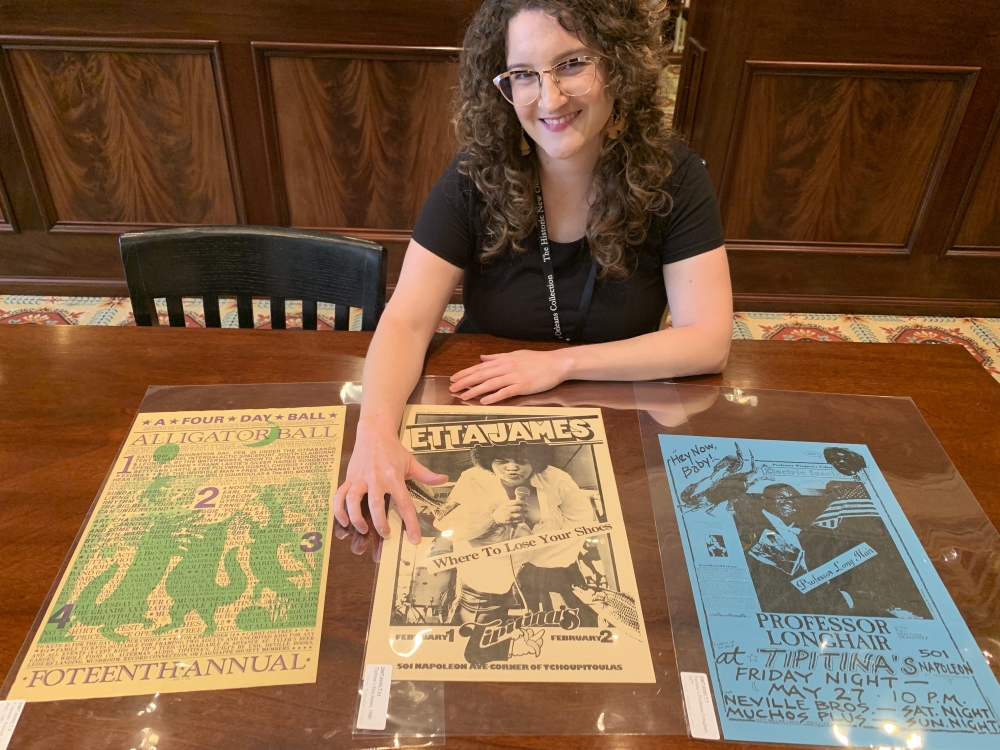
Curatorial Cataloger Emily Perkins looks over a poster for an Etta James show with the tagline “Where to Lose Your Shoes.”
As one of THNOC’s Curatorial Catalogers, I am responsible for gathering information about individual items within the institution’s holdings, recording that data, and establishing connections that provide researchers with some context. In this piece, I’ll look at some of my favorite Tipitina’s posters and promotional pieces from the Smith Collection. To read more about the origins of Tipitina’s check out this companion article.
1.
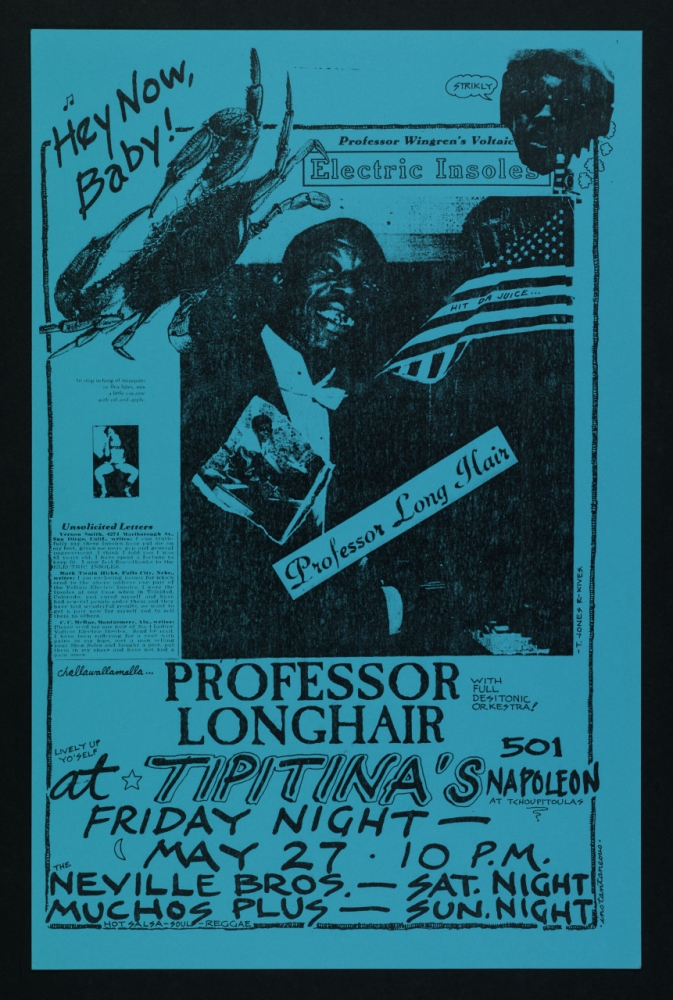
This poster for a Professor Longhair show at Tipitina’s was made by noted artist Bunny Matthews in 1977. (The Michael P. Smith Collection at THNOC, 2007.0103.7.7)
This poster from Tipitina’s inaugural year, designed by iconic local artist Bunny Matthews, uses a collage style that includes an early photograph of Professor Longhair (or “Fess,” for short), advertisements and testimonials for “electric insoles,” a photograph of a scantily clad woman, a crab, Fess’s lyrics and quotes like “challawallamalla” (a nod to Fess’s hit “Tipitina”), and an eyebrow-raising remedy for insect bites that involves cocaine.
2.
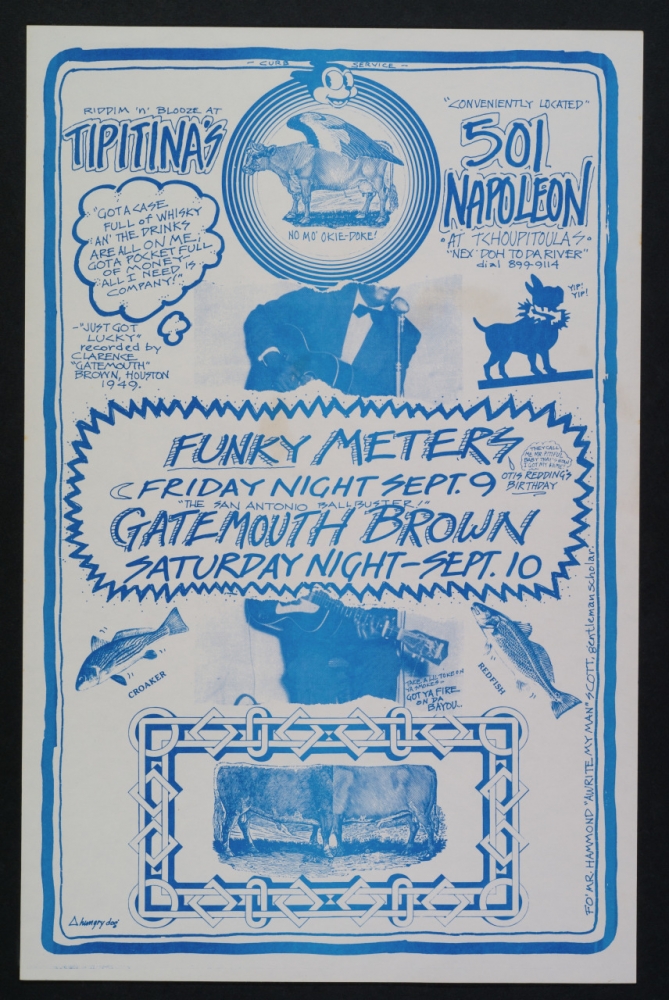
Another 1977 poster by Bunny Matthews advertises “Riddim ’n’ Blooze at Tipitina’s.” (The Michael P. Smith Collection at THNOC, 2007.0103.7.9)
Here Matthews uses the same collage style as the Professor Longhair piece to an even more eccentric effect, featuring lyrics to Clarence “Gatemouth” Brown’s songs along with fish (keep an eye on those fish), two-tailed and flying cows, and a headless guitar player. This poster is also from Tipitina’s first year and informs readers that the club is located “nex’ doh to da river.” Matthews would later become well known for his Vic and Nat’ly characters, which were written to emphasize the New Orleans dialect most often referred to as a “Y’at” accent.
3.
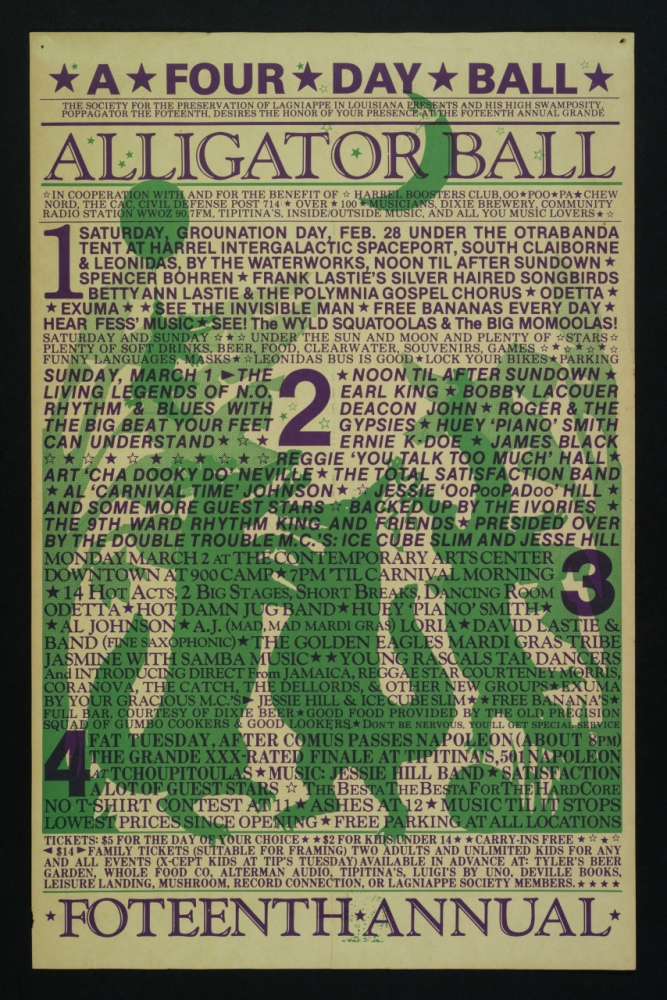
A poster promoting the “Foteenth Annual Alligator Ball” in 1981 features a design by Coco Robicheaux. (The Michael P. Smith Collection at THNOC, 2007.0103.7.1)
Some of Tipitina’s founders started an annual tradition of the Alligator Ball well before they opened their club. In 1981, they mounted a four-day festival held at locations throughout the city, including Tipitina’s. Part of my job as a Cataloger is to determine who had a hand in making the object, so I did some research into Smith’s photo archive and was excited to discover that the background artwork featured a reproduction of a print by legendary blues musician Coco Robicheaux, who was also known as a visual artist.
4.
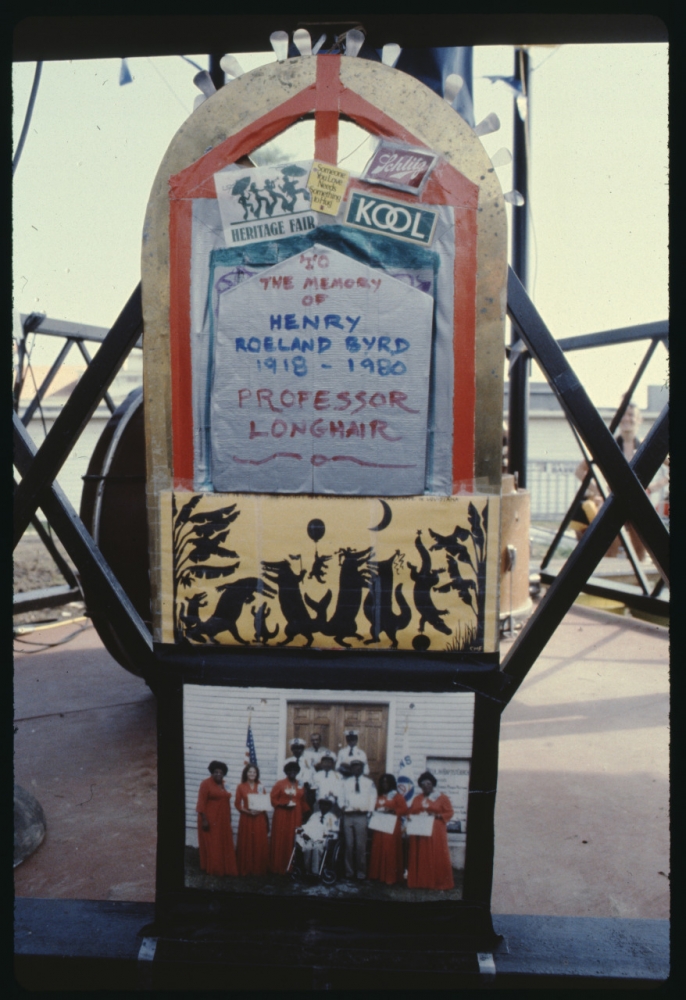
A memorial to Professor Longhair features artwork by Coco Robicheaux. (The Michael P. Smith Collection at THNOC, 2007.0103.8.420)
This photograph shows a memorial to Professor Longhair at the 1980 Jazz Fest, which incorporates the same print that was used on the 1981 Alligator Ball poster. Note the label for KOOL cigarettes, which Professor Longhair smoked, a hand-drawn headstone, and at the bottom, one of Smith’s photographs of Longhair and his wife, Alice, with other members of the Civil Defense Special Forces 714 in front of Beulah Baptist Church.
5.
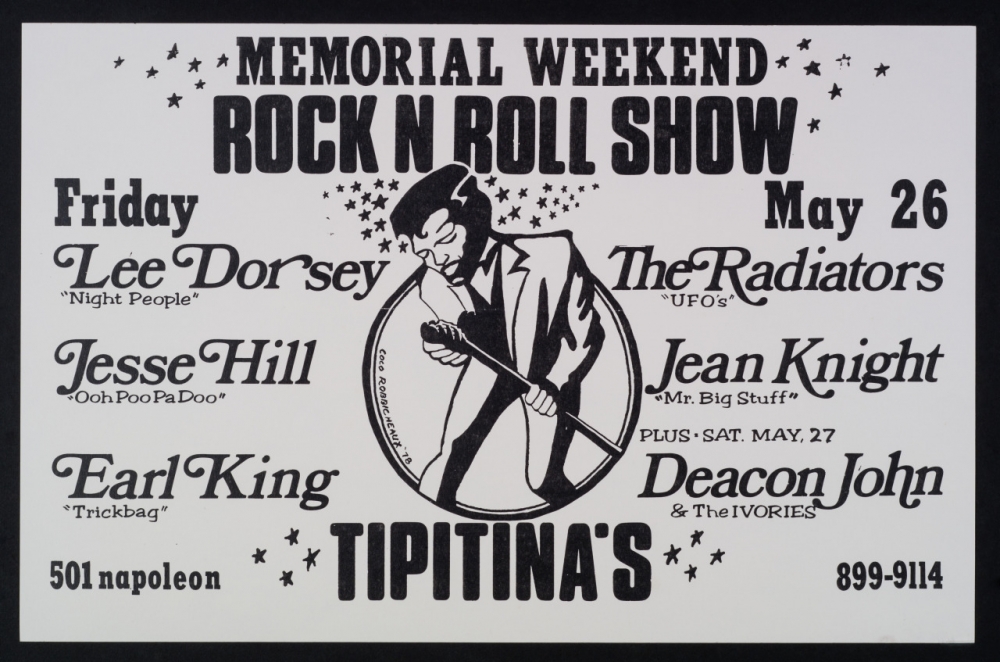
Coco Robicheaux’s work shows up again on this poster for Tipitina’s Memorial [Day] Weekend show in 1979. (The Michael P. Smith Collection at THNOC, 2007.0103.7.12)
This print, signed by Robicheaux, has a more precise quality than the Alligator Ball print. This Memorial [Day] Weekend show featured all local acts and signals a change from the collage style to a more traditional layout without the handwritten elements.
6.
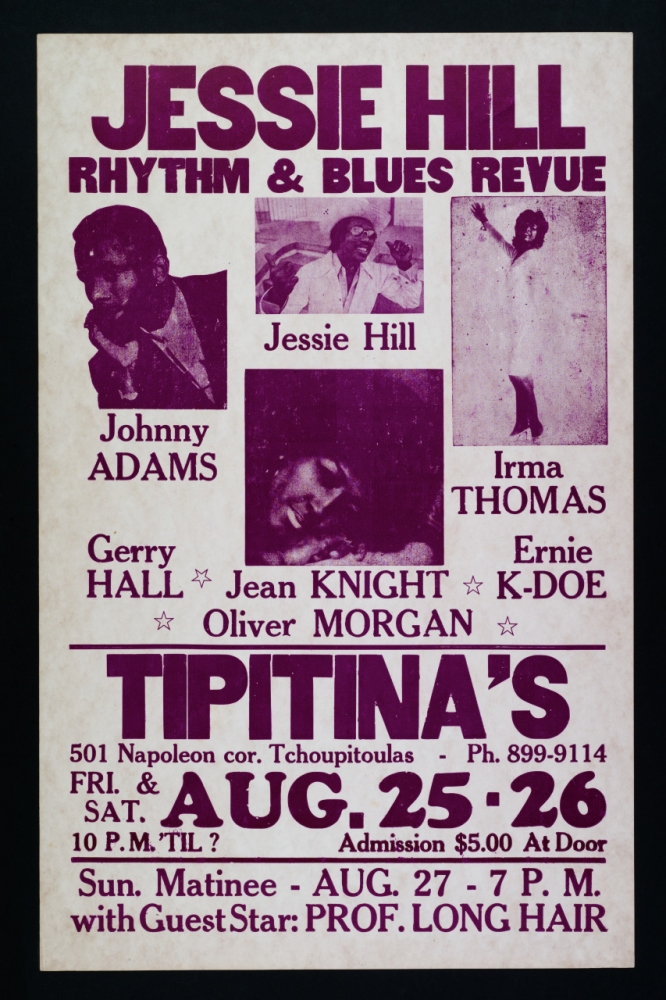
This poster for the Jessie Hill Rhythm & Blues Revue is from 1978. (The Michael P. Smith Collection at THNOC, 2007.0103.7.25)
Working with this collection inspired me to make a New Orleans rhythm and blues playlist on Spotify that I listened to while I cataloged. My recommended tracks include “Reconsider Me” by Johnny Adams and “Free and Easy” by Jessie Hill, both of which could have been performed at this show.
7.
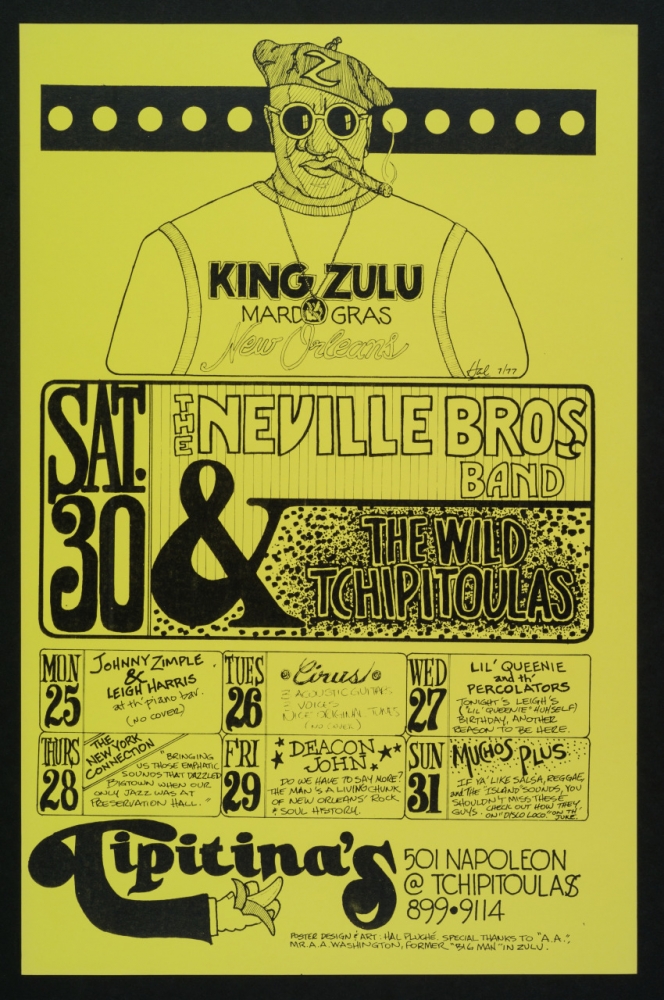
This poster is for Tipitina’s schedule of performances from the 1980 Carnival season. (The Michael P. Smith Collection at THNOC, 2007.0103.7.10)
Mardi Gras and Jazz Fest are peak seasons for Tipitina’s, and this January 1980 concert calendar shows a jam-packed lineup—even three weeks before Fat Tuesday—highlighted by the Wild Tchoupitoulas Mardi Gras Indians and the Neville Brothers Band. The poster features an illustration of King Zulu by Hal Plauché at the top and a hand-lettered concert schedule at the bottom.
8.
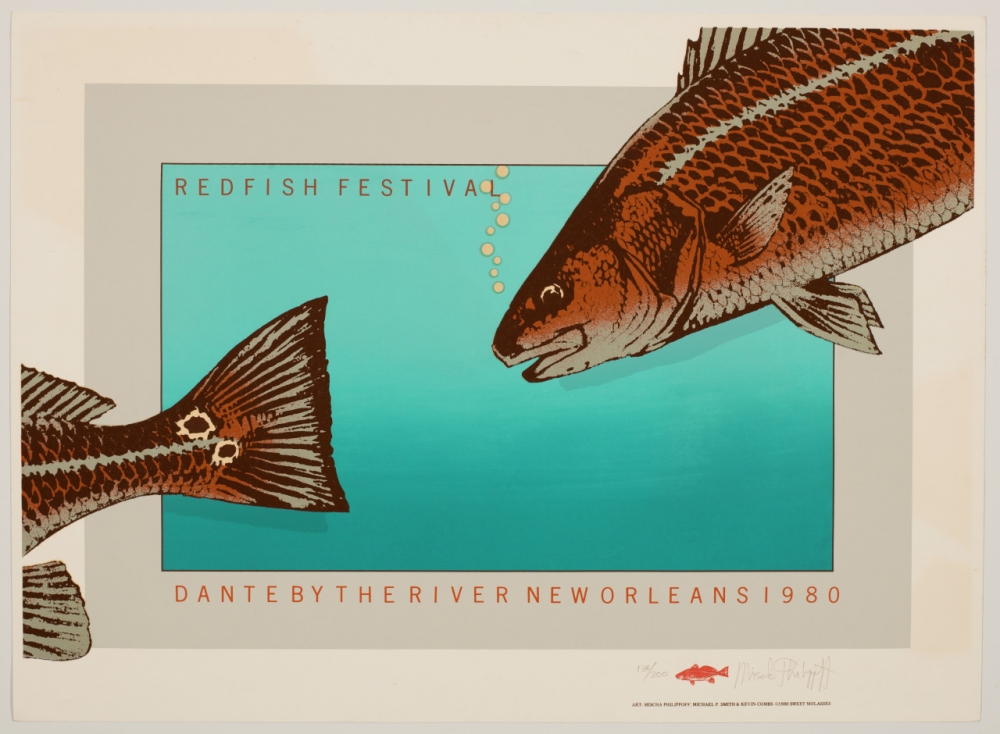
A poster for a 1980 “Redfish Festival” has some familiar fish. (The Michael P. Smith Collection at THNOC, 2007.0103.7.35)
Smith started a printing company called Sweet Molasses in 1979 with his design partner Mischa Philippoff. The Sweet Molasses posters are perhaps the most polished and impressive pieces in this collection, and they are the threads that connect Smith’s professional work and personal collection.
9.
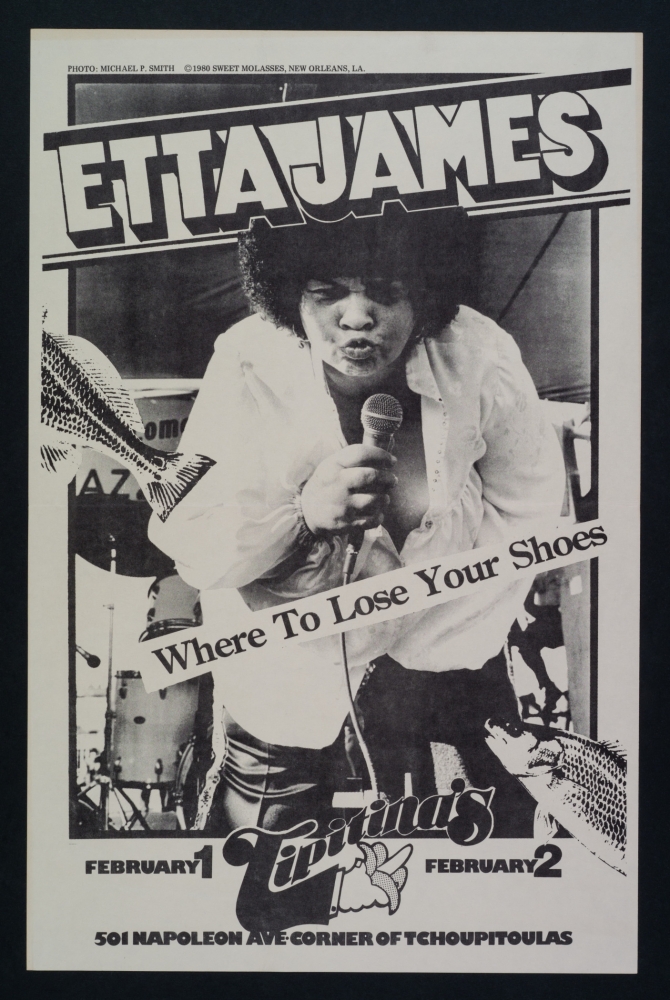
A poster for a 1980 Etta James show contains a memorable tagline. (The Michael P. Smith Collection at THNOC, 2007.0103.7.11)
This one might just be my favorite. I love the tagline “Where To Lose Your Shoes,” and the photograph, taken by Smith at the 1979 Jazz Fest, is up close and personal. Both make me want to dance. The fish jumped out at me as a recurring character in this collection, going back to the 1977 Bunny Matthews-designed “Riddim ‘n’ Blooze” poster and reappearing on the 1980 Redfish Festival poster.
10.
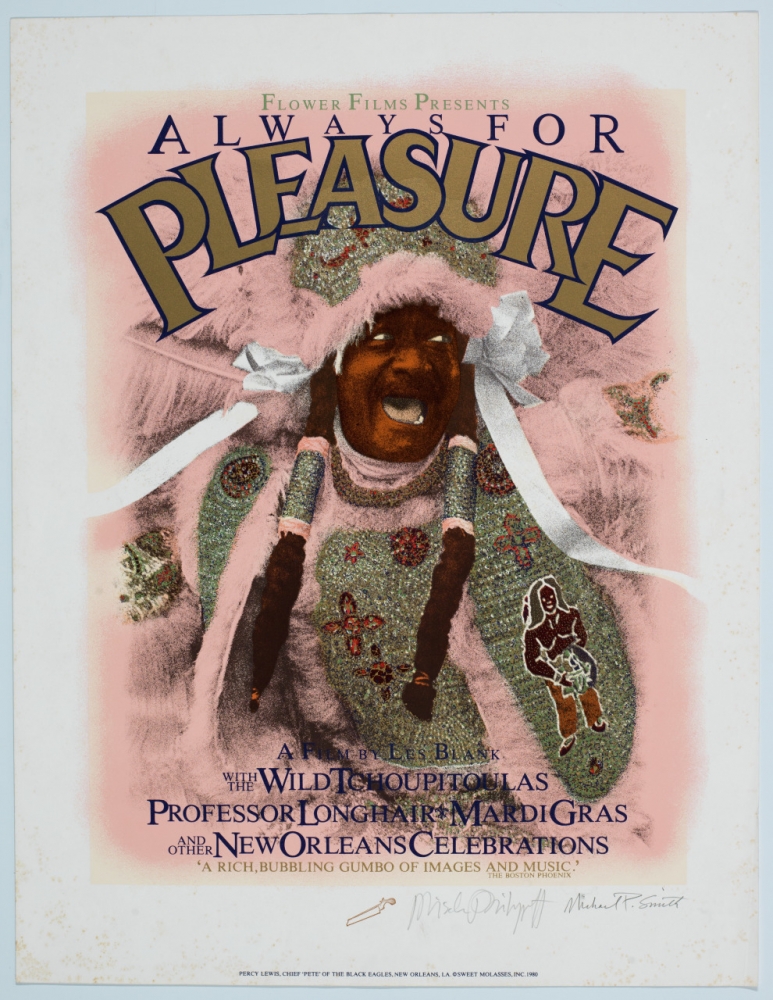
Michael P. Smith’s photograph of Chief “Pete” Percy Lewis of the Black Eagles is featured in this Sweet Molasses poster produced to promote the 1978 documentary Always for Pleasure. (The Michael P. Smith Collection at THNOC, 2007.0103.7.29)
This poster for a 1978 documentary on New Orleans culture and the Mardi Gras Indians is so enticing, I had to check the movie out from the New Orleans Public Library. I learned that the filmmaker, Les Blank, stayed with Smith during filming of this particular production. THNOC recently acquired a five-disc set of Blank’s films, including this and 13 other short documentaries on southern food and music. My favorites include, Spend it All; The Blues Accordin’ to Lightnin’ Hopkins; Yum, Yum, Yum; Gap-Toothed Women; and Garlic Is as Good as Ten Mothers.
That’s a look back on some of the highlights from Michael P. Smith’s collection of posters. The items are accessible to researchers free of charge at THNOC’s Williams Research Center, so come on down to the French Quarter or browse the collection via the online catalog. And remember, no appointment is required to visit the reading room of THNOC’s research center.
For more on the history of Tipitina's, check out this companion article by Marketing Associate Eli A. Haddow.

